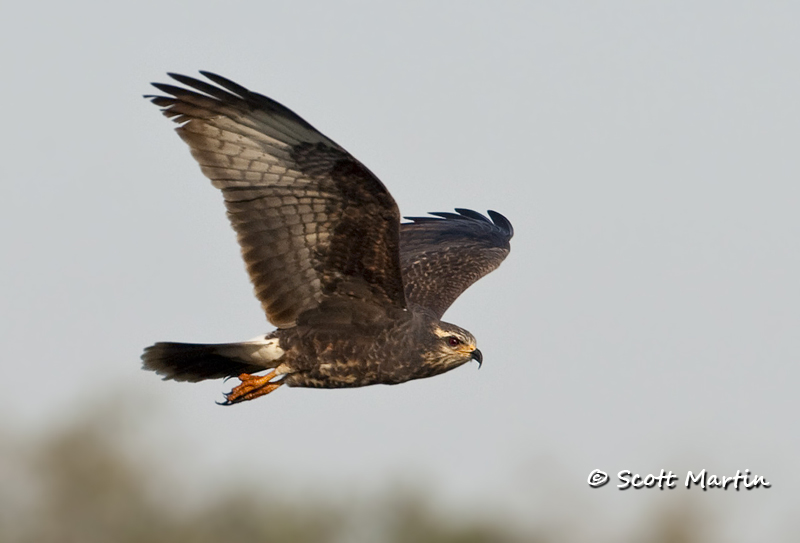
by Scott Martin Photography | May 18, 2011 | Birds, Blog, Raptors
For those of you who follow this blog regularly, please accept my apologies for all the Snail Kite entries. You will be glad to know I’m getting near the end of them. Snail Kites have been a fascination for me since first photographing one at Joe Overstreet in Florida about five years ago. This year we chartered a boat on Big Lake Toho and were blessed with great light and lots of Snail Kites to photograph. The following is another series of in flight images, all taken hand held with a 500mm lens from Captain Rick’s boat.
The Snail Kite is a locally endangered species in Florida where it is estimated that there are less than 400 breeding pairs. They eat Apple Snails almost exclusively.

The next shot is of an adult male with some nest building material. The adult male is a wonderful steel blue colour.
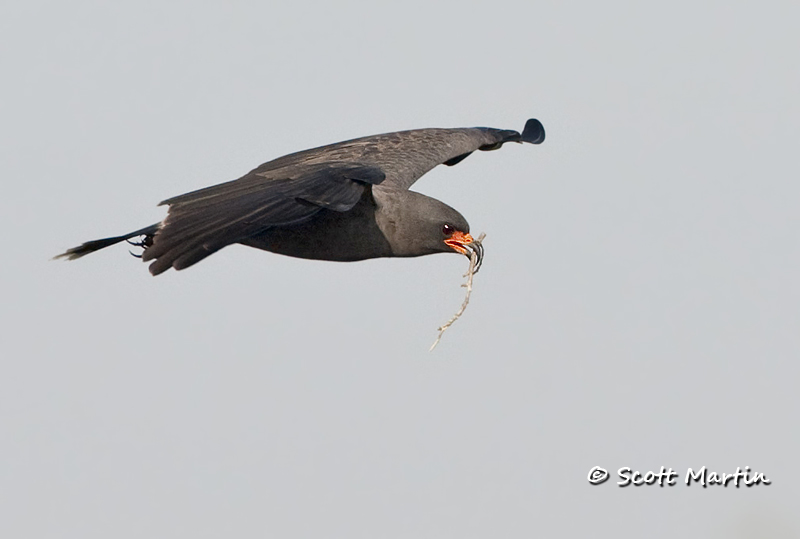
.
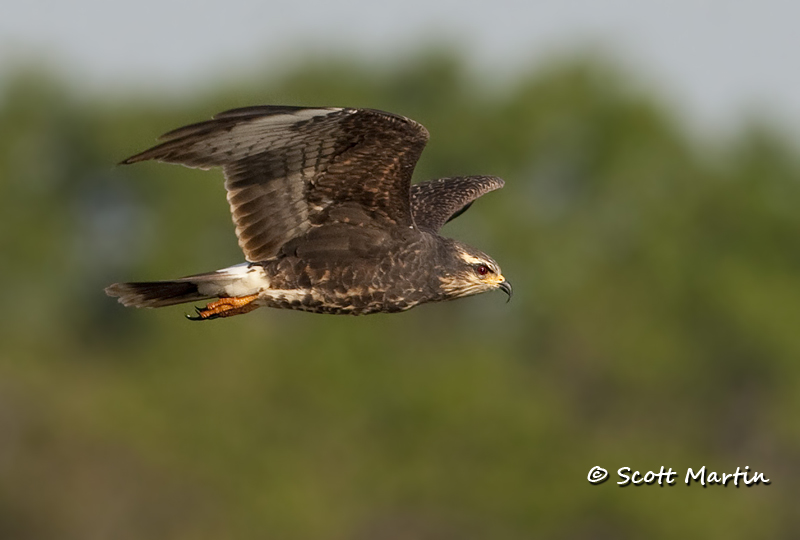
The next image shows the Snail Kite in its classic hunting pose, flying low to the water surface with its head down looking for the Apple Snails clinging onto the reeds below.
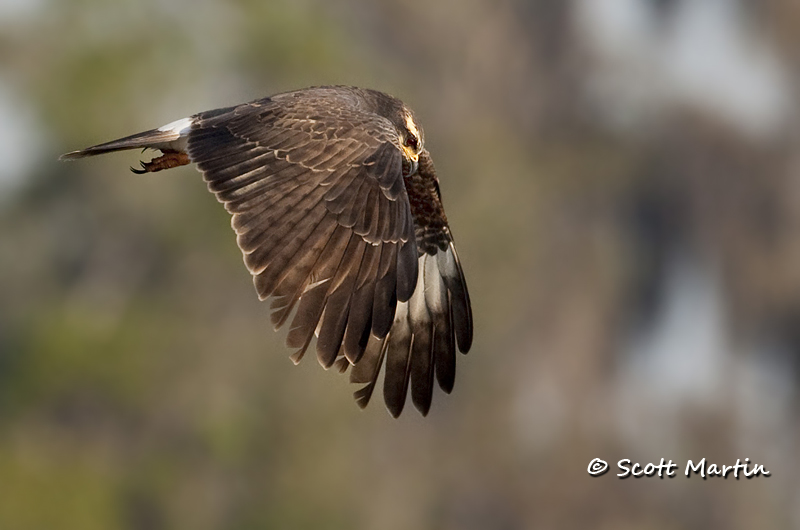
.
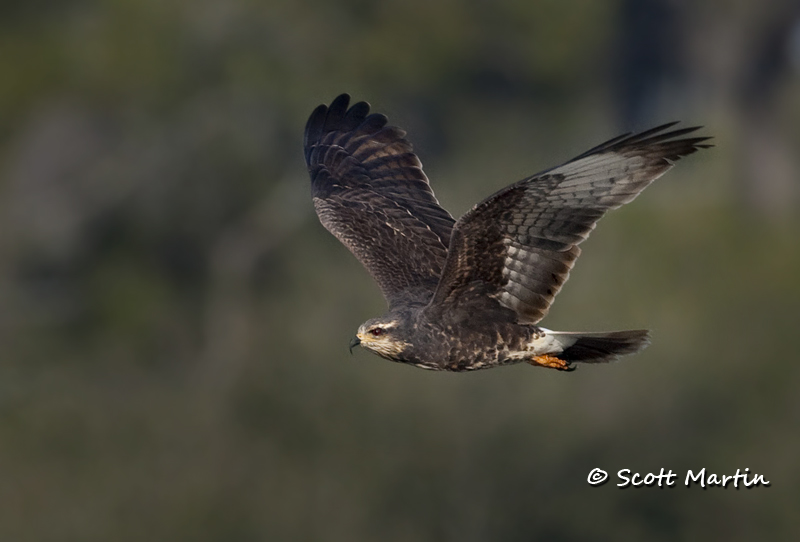
More images can be found in the Hawks, Falcons & Kites Gallery
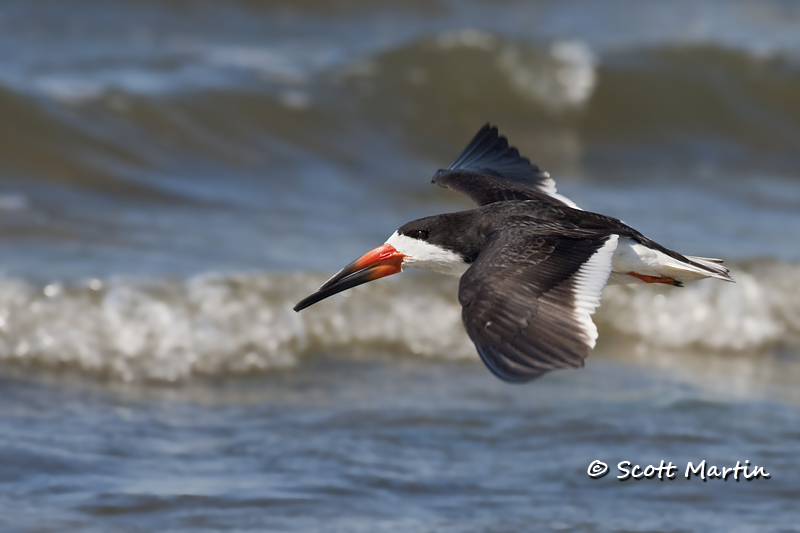
by Scott Martin Photography | May 16, 2011 | Birds, Blog, Shore Birds & Waterfowl
The Black Skimmer is a peculiar looking bird because of its uniquely designed bright orange, black tipped bill which features a lower mandible that is much longer than the upper (the only bird in North America with such a beak). The skimmer feeds on fish and shrimp which it forages by flying low over the water with its lower mandible slicing through the water. When it senses a fish or shrimp it clamps its jaw tight and seizes its prey. While skimming, the water flowing into the lower jaw exits out through an exhaust vent at the base of the bill which is an amazing phenomenon to see.
The Black Skimmer is a fairly large bird approximately 18-20″ in length with a wing span up to four feet in an adult. At birth the mandibles are the same length however by the time they have fledged (about four weeks old) the lower mandible is already nearly 1 cm longer than the upper.
The Black Skimmer lays its eggs in a simple scrape on the ground, usually in a beach area, and rarely has any nest material associated with it. The incubation period is 21-23 days with both parents taking part in the process. One of the biggest threats to skimmer nests is via public encroachment by people who inadvertently trample the eggs. For this reason known skimmer nesting areas are cordoned off during the spring nesting season.
The following images were taken in March of this year at the Merritt Island National Wildlife Refuge in Florida while Deb & I were waiting to photograph a rocket launch from the Kennedy Space Center which is also located on Merritt Island.
This in flight shot shows the unique bill design for which the Black Skimmer is notorious.

A group of these birds are known as a “Conspiracy”, “Embezzlement” or “Scoop” of Black Skimmers.
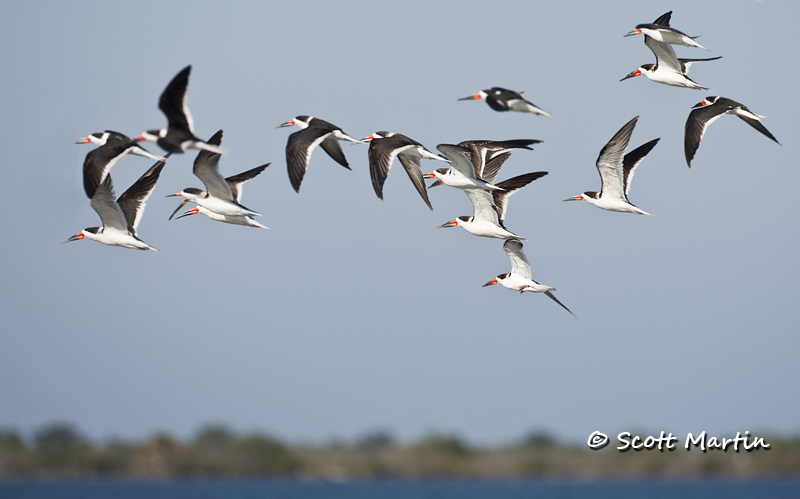
More Black Skimmer images can be seen in the Gulls, Terns & Skimmers Gallery
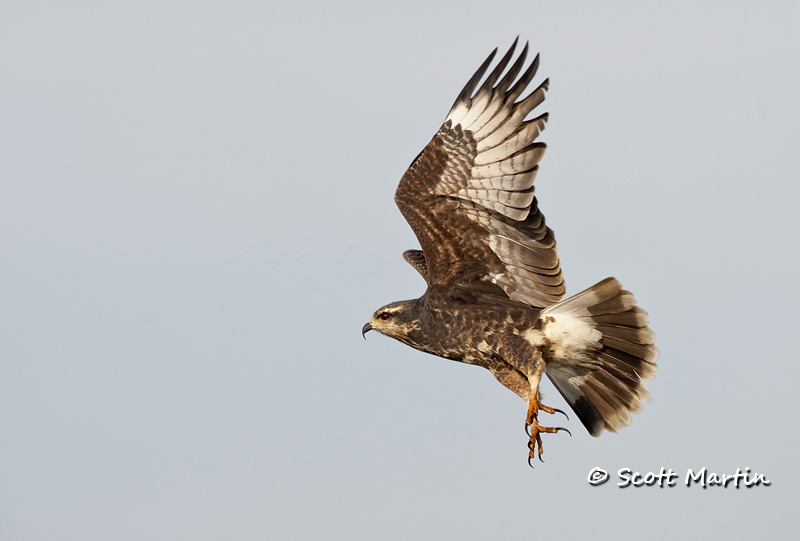
by Scott Martin Photography | May 11, 2011 | Birds, Blog, Raptors
Deb and I leave early this morning to head back to Florida for a few days during which we will be visiting the J.N. Ding Darling National Wildlife Refuge on Sanibel Island. Ding Darling is known for its migratory bird populations and although we will be a little late to see the migratory birds we are hoping to get some good shots of the resident birds. It’s a new spot for us to visit and we know it will be a pleasure to explore a new NWR.
Below are some new Snail Kite additions to the Hawks, Falcons & Kites Gallery on the website. These in flight shots were all taken in March of this year on Lake Toho, just south of Kissimmee in central Florida. Our guide and captain of the boat we chartered was excellent at knowing where to find the Snail Kites as well as positioning the boat to keep the morning light on the proper side of the birds! It’s always a huge added bonus when your guide is also a photographer 🙂

.
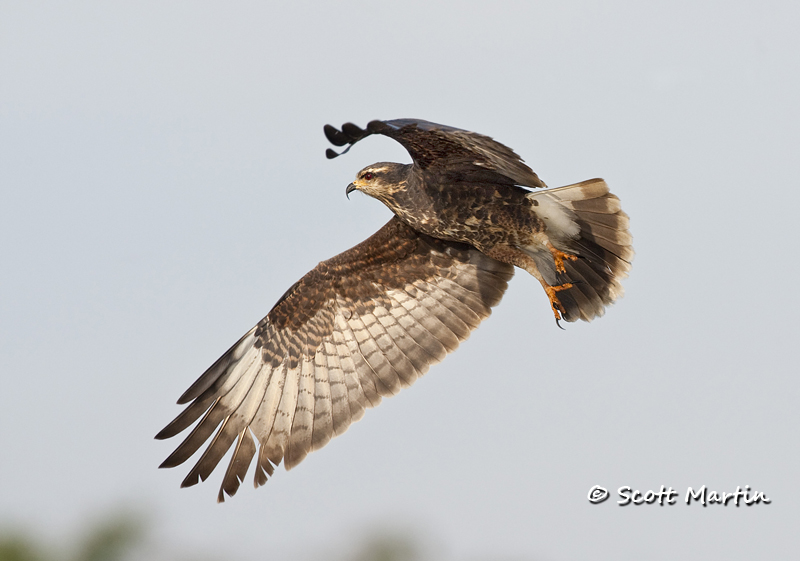
Sorry about the copyright covering the wing tips on this next image, however I use a batch command to add the copyright & watermark to a number of images at once and didn’t notice this until it was too late to change.
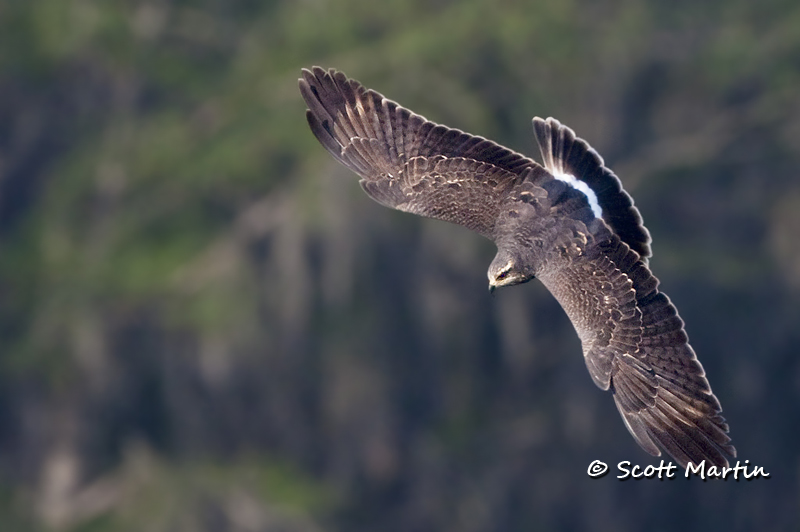
.
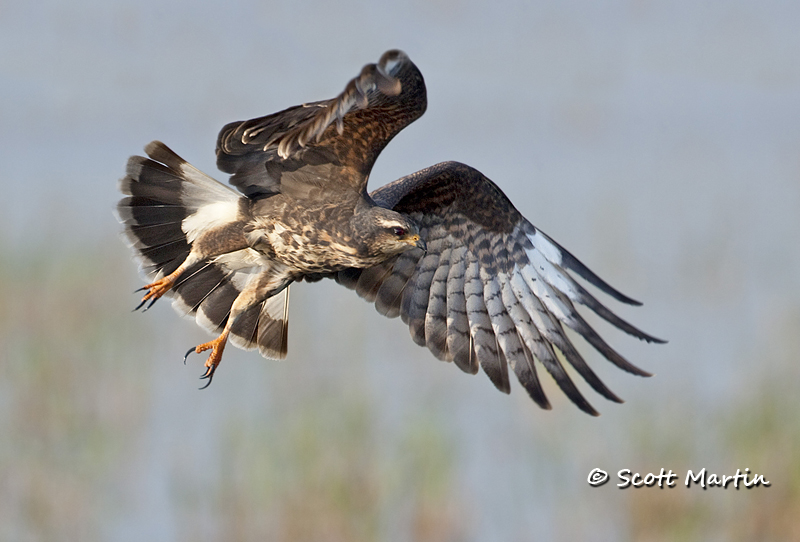
.
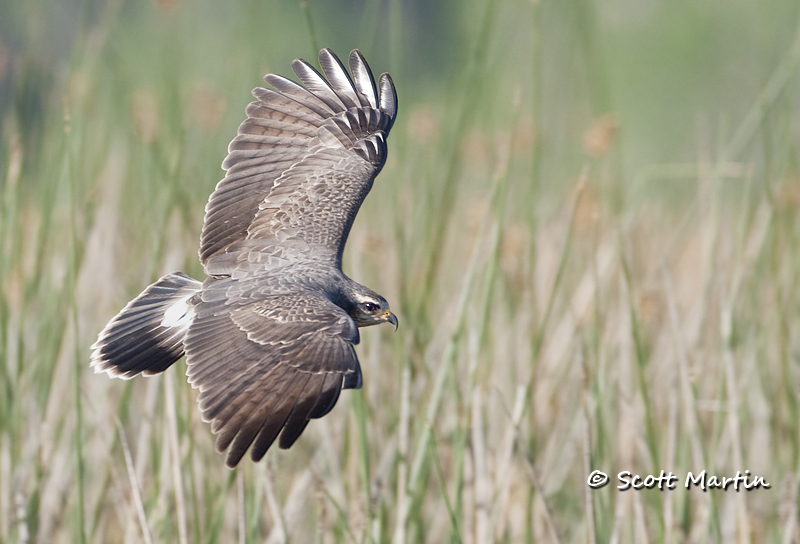
.
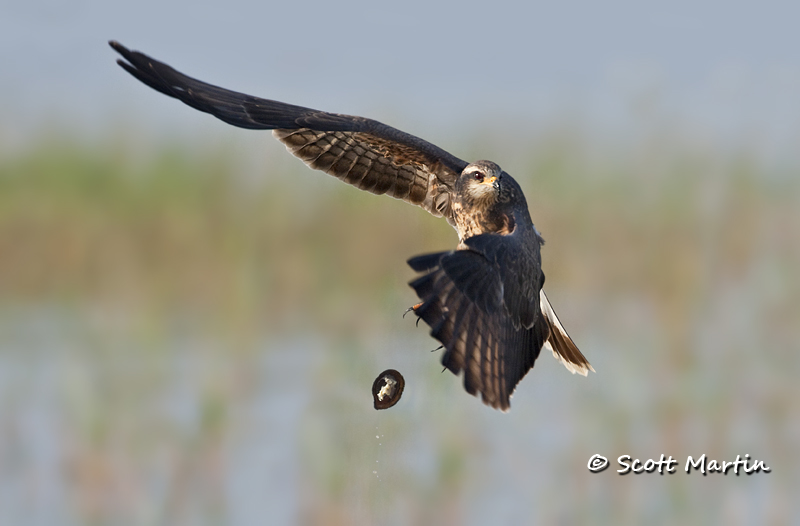
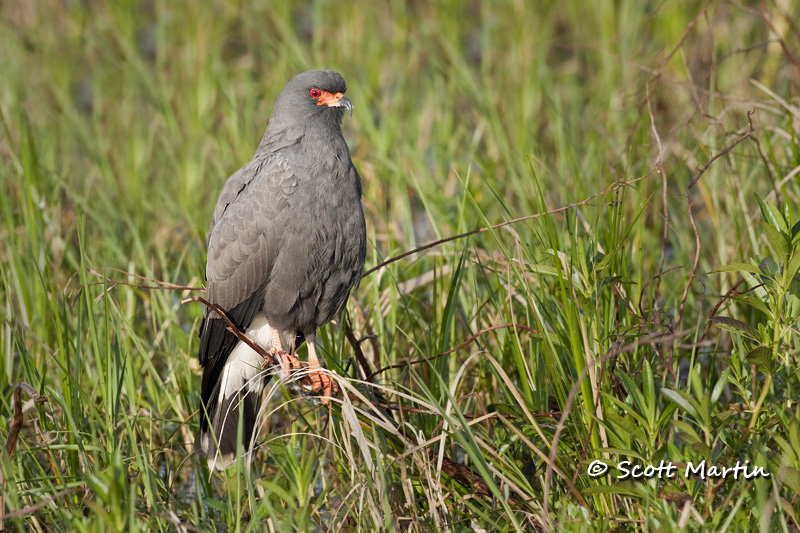
by Scott Martin Photography | May 8, 2011 | Birds, Blog, Raptors
Our family has spent the March Break holiday for last number of years in Kissimmee, Florida. March is a great time for bird photography as many of the birds are nesting and vibrant in their breeding plumage. One of our ‘target birds’ this year was the locally uncommon Snail Kite and we were fortunate to be able to photograph many of them while out on a boating charter in Big Lake Tohopekaliga or Lake Toho for short.
Snail Kites feed almost exclusively on Apple Snails which are only found in a few Florida lakes at a population level sufficient to support the kites. Lake Toho and Lake Okeechobee are two such lakes. The Florida population of Snail Kites was reduced to 20 by 1964 largely because of marsh draining and hunting, especially at Lake Okeechobee. Fortunately the population rebounded such that by 1983 an estimated 700 were living in Florida.
All of the images in today’s post were taken hand-held from a boat in Lake Toho.

The next in flight shot shows the typical ‘head down’ posture the Snail Kite assumes while searching for snails. They fly rather slowly and rely on their keen eye sight to spot the Apple Snails on the reeds below.
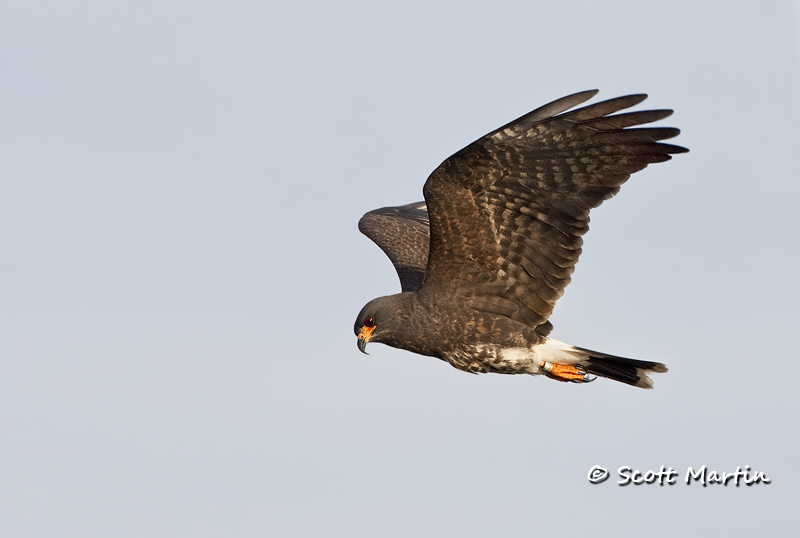
This image, although similar to the environmental shot above, is a full frame image taken in a vertical orientation at a distance of about twenty feet. It was a real treat to be so close to such an uncommon bird.
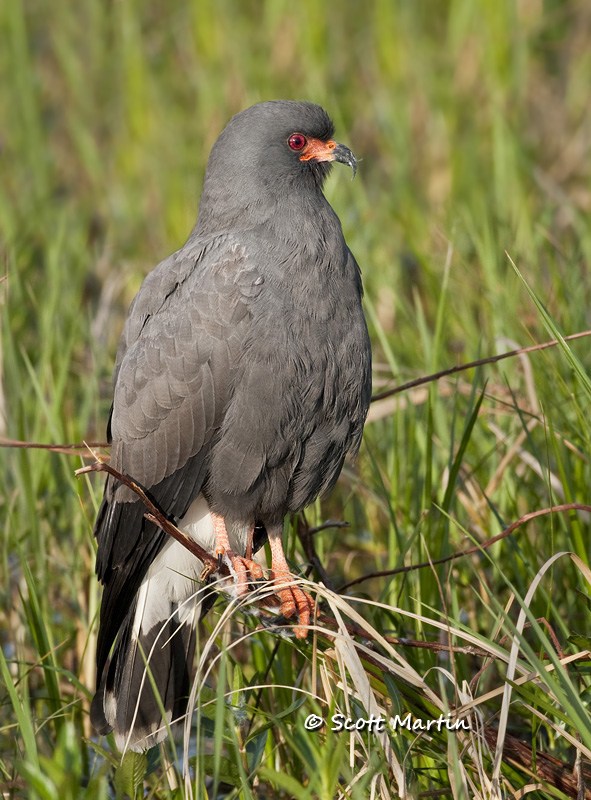
A rather big no-no for bird photographers is to post images of birds on man-made perches, so please forgive me for including this “bird on a pole” shot however the kite’s expression was simply too good to pass up!!
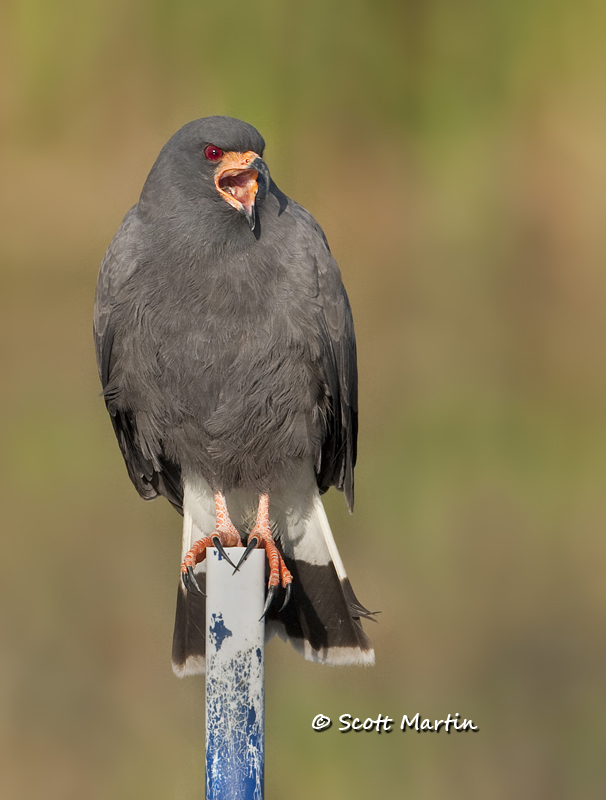
Happily the three hours we spent on Lake Toho resulted in a number of ‘keepers’ which I will try to post over the next couple of weeks.
Blessings and Happy Mothers Day to all the moms……you are loved!
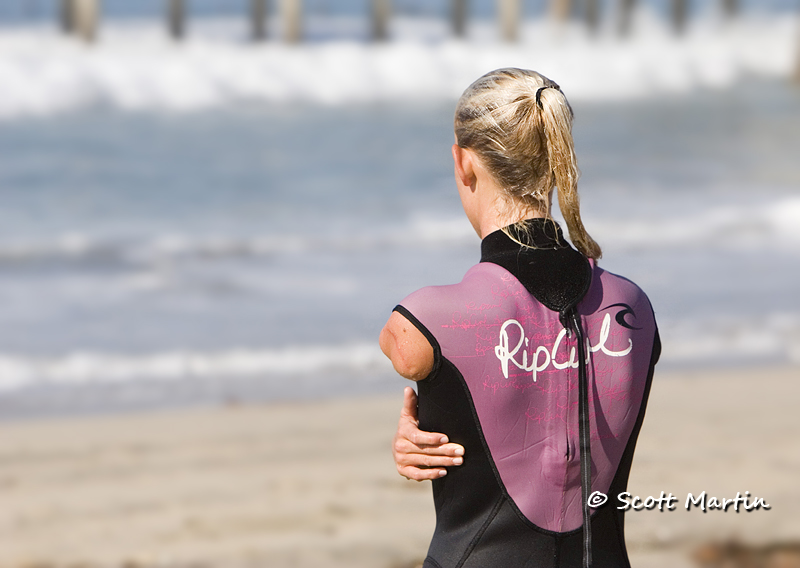
by Scott Martin Photography | May 1, 2011 | Blog, General
Although the spring warbler migration is ramping up nicely, this first blog entry for May will contain no bird images. Instead it is designed to get you into your local theater to view the movie “Soul Surfer” which tells the incredible story of professional surfer Bethany Hamilton, who lost her left arm in an attack by a fourteen foot Tiger Shark on October 31, 2003, while surfing off the coast of Kauai, Hawaii. Bethany Hamilton was only thirteen years old when she lost her arm yet miraculously she was back in the water one month later and competed again in January 2004. In 2005 Bethany won her first national title and then realized her childhood dream by turning professional in 2007.
My wife and I saw Soul Surfer a few weeks ago and enjoyed it immensely. The movie chronicles Bethany’s life and that of her close-knit family, whose lives revolve around surfing and a strong faith in the Lord; a faith that sustained Bethany through the loss of her arm and was her strength to continue on surfing despite the humanly impossible odds. This movie is a must see movie.
In October 2006 while vacationing in California, Deb & I were at the ISA-XXI World Surfing Games being held at Huntington Beach. Many countries from around the world were represented at these games, including the American Team of which Bethany Hamilton was a member representing her home state of Hawaii. It was an amazing experience for us as we were able to photograph the competitors and actually ended up alongside the Hawaiian team, who explained in detail how to spot developing waves and gauge which ones would potentially result in the perfect wave to ride with the short boards they were using at the games.
The following are some images of the Soul Surfer, Bethany Hamilton. I trust they encourage you to go see the movie (and plan a trip to Huntington Beach :)). The surfing images are fairly large crops as they were taken with a 70-200/2.8 IS lens mounted on my first DSLR, the Canon 20D (which you will get a glimpse of in the last image).
Contemplation

Panoramic crop

Riding the wave.
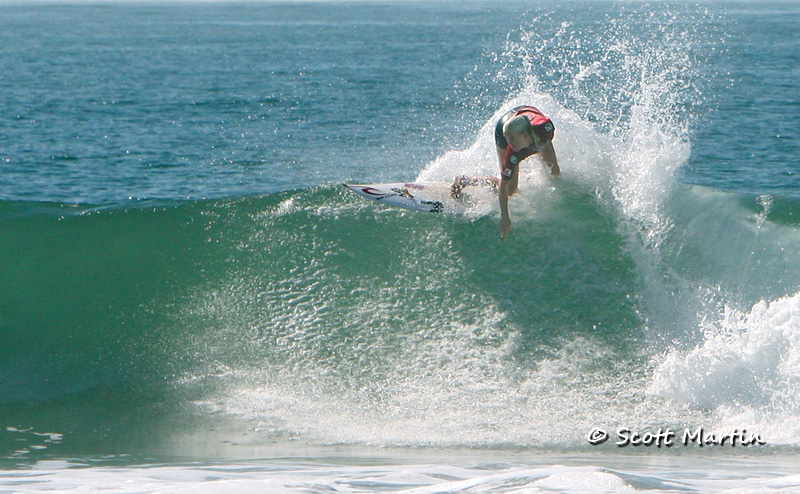
Part of the Hawaiian team.
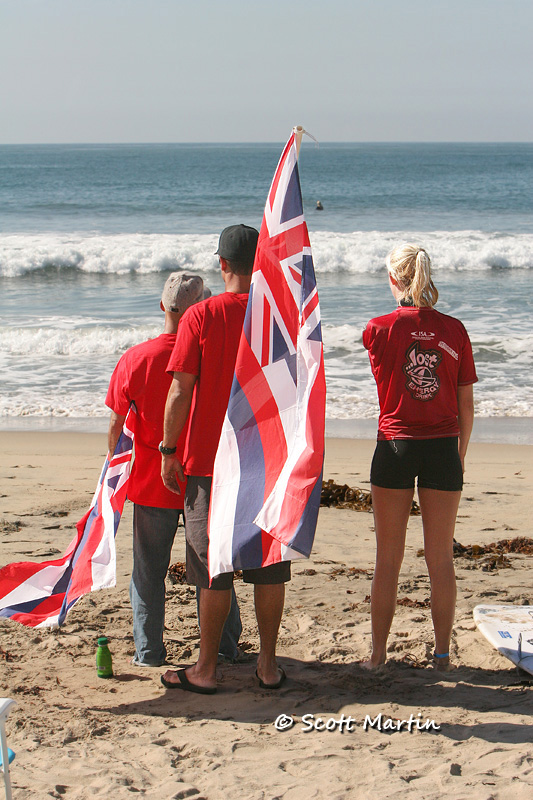
Heading out for another session.
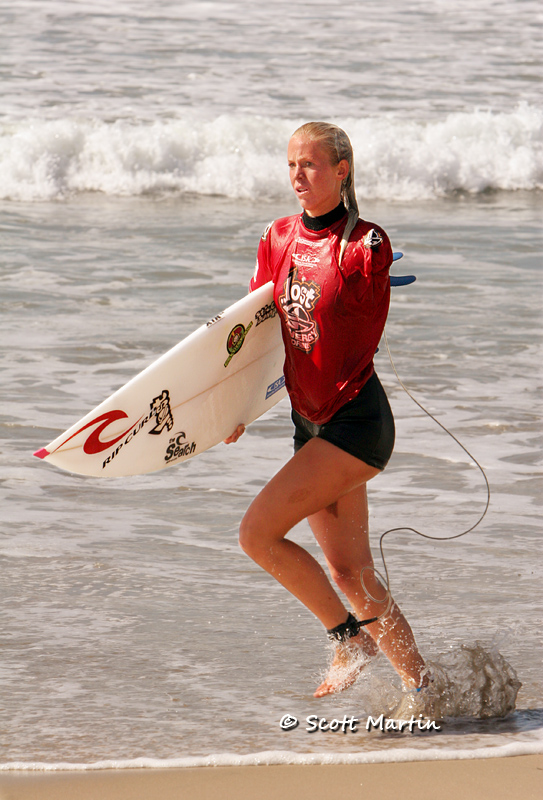
.
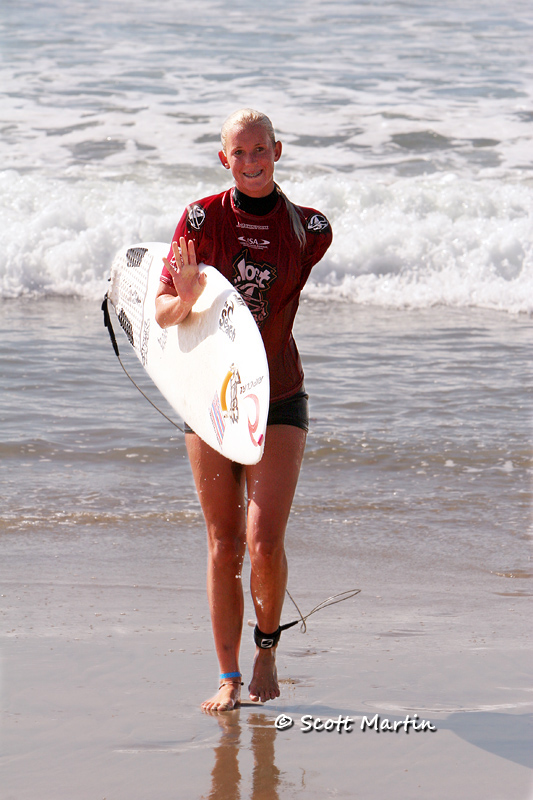
The Hawaiian Team with the Huntington Beach Pier in the back ground.
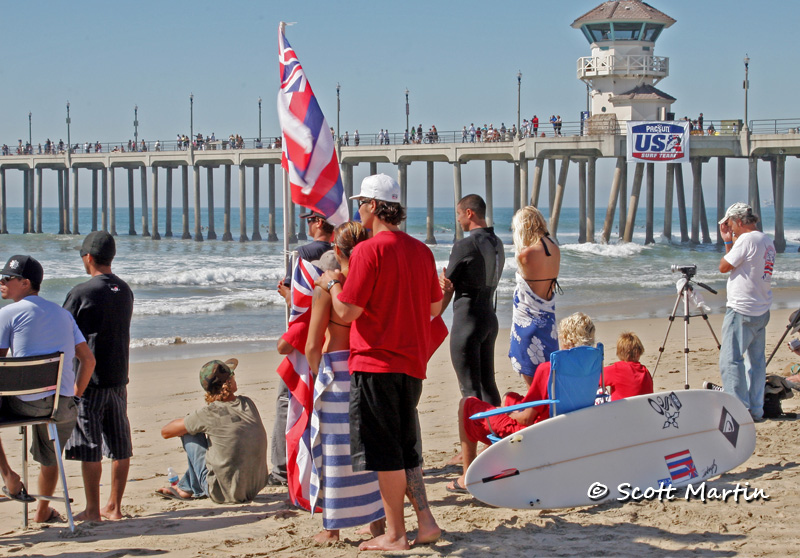
And a shot Deb took with her Canon SD-700
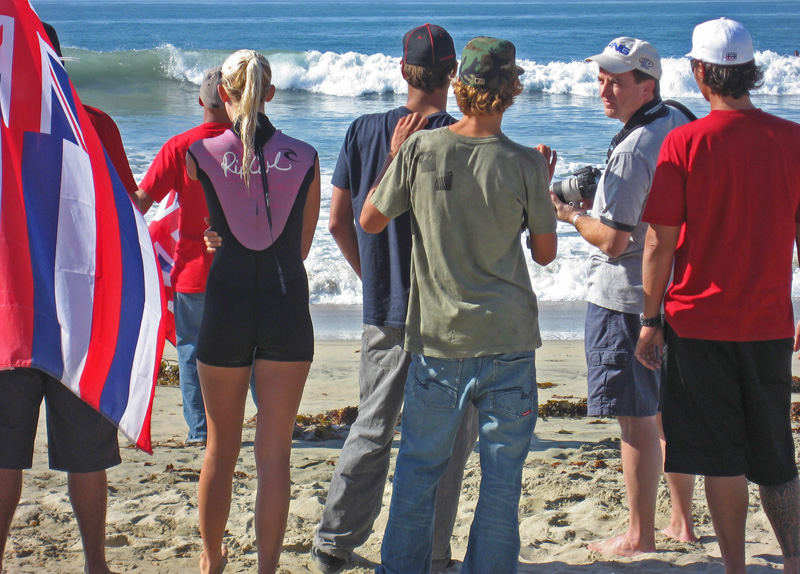
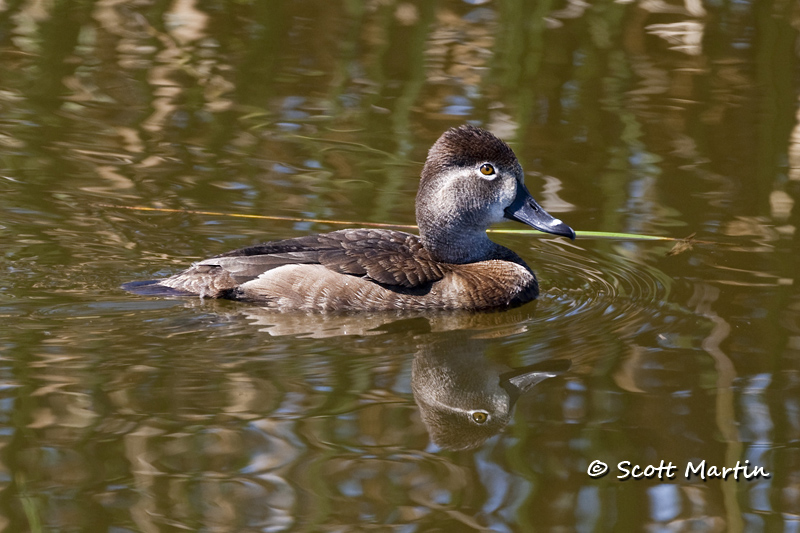
by Scott Martin Photography | Apr 25, 2011 | Birds, Blog, Shore Birds & Waterfowl
The medium-sized Ring-necked Duck is a common duck that breeds in the Northern United States and Canada and migrates to the Southern United States during the winter months although it has been found in western Europe, Costa Rica and Central America on occasion. This duck prefers fresh water lakes, ponds & rivers however has been seen on salt water bodies in the south. The Ring-necked duck is a diver whose diet consists of plants, mollusks, insects and small fish.
The Ring-necked Duck was first described in 1809 and was named for its chestnut neck ring, which is rarely seen except at close range. One of the most noticeable field marks of this duck is its prominent white bill ring so perhaps this duck would be better known as a Ring-billed Duck!
The Ring-necked duck does not associate in large flocks hence they are often only seen in pairs. They are prolific egg layers with anywhere from six to fourteen eggs laid which are then incubated by the female for approximately one month while the male brings food to the nest.
This first image is of a female.

Here is the male.
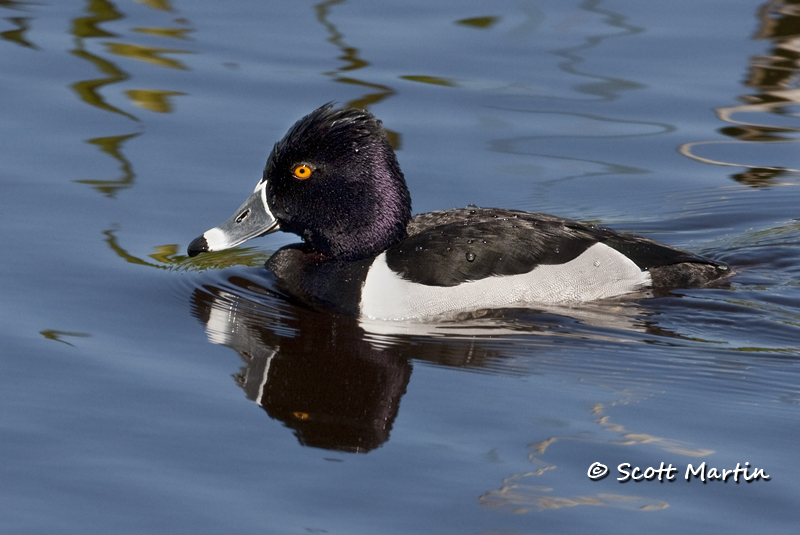
I apologize for the rather high angle these images were taken from, however the fairly steep banks along the ponds at the Viera Wetlands (and the gators) don’t allow one to get as low to the water as one would like.
Lastly, for those of you follow this blog regularly, I’m trying something new. The first mention of a bird in this and future blog posts will be in bold and if you hover over the name in bold with your mouse, the scientific name of the bird will be displayed in a gray text box. I’m teaching myself HTML & CSS with the hope of providing a better blog experience when you stop by this site.


































Follow Scott Martin Photography